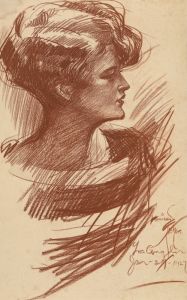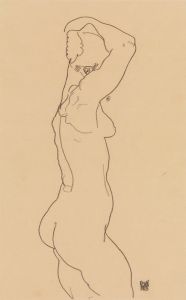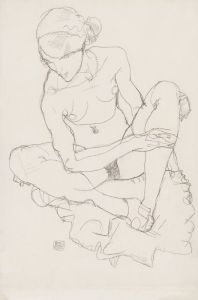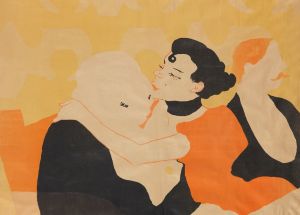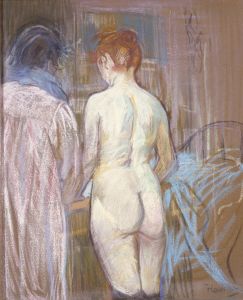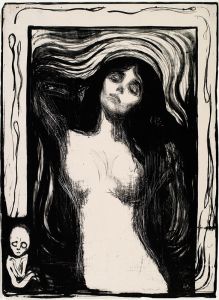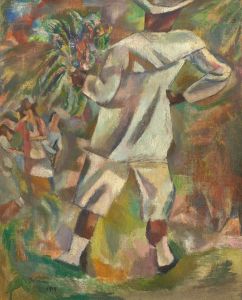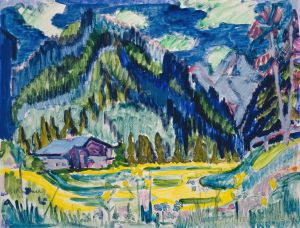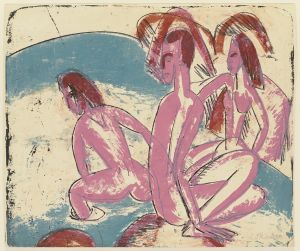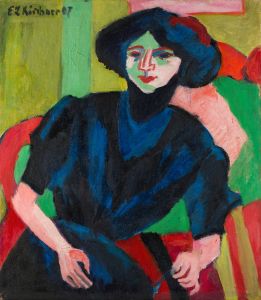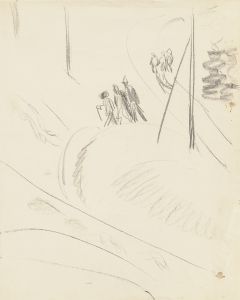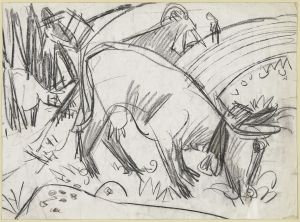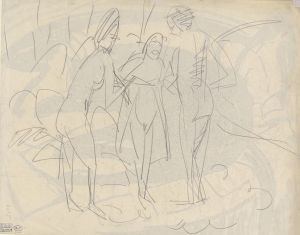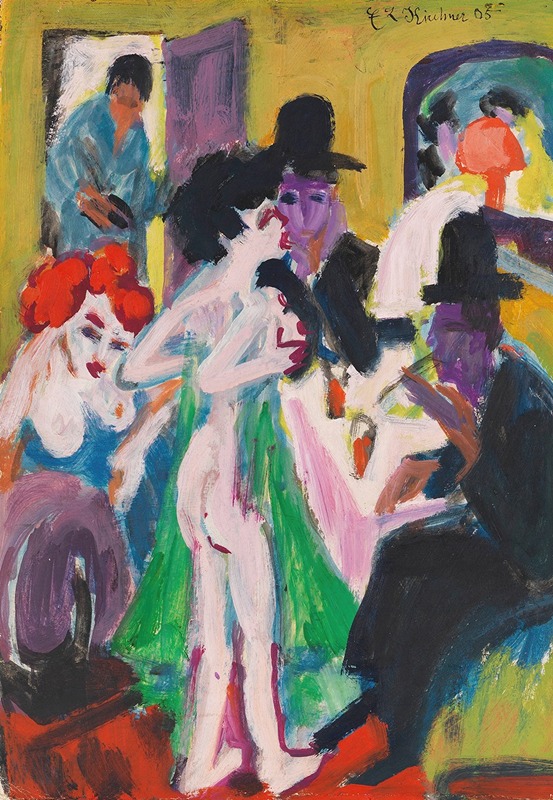
Im Bordell
A hand-painted replica of Ernst Ludwig Kirchner’s masterpiece Im Bordell, meticulously crafted by professional artists to capture the true essence of the original. Each piece is created with museum-quality canvas and rare mineral pigments, carefully painted by experienced artists with delicate brushstrokes and rich, layered colors to perfectly recreate the texture of the original artwork. Unlike machine-printed reproductions, this hand-painted version brings the painting to life, infused with the artist’s emotions and skill in every stroke. Whether for personal collection or home decoration, it instantly elevates the artistic atmosphere of any space.
Ernst Ludwig Kirchner's painting Im Bordell (translated as In the Brothel) is a notable work by the German Expressionist artist, created during the early 20th century. Kirchner, a founding member of the influential art group Die Brücke (The Bridge), was known for his bold use of color, dynamic compositions, and exploration of modern urban life. This painting reflects his interest in depicting the complexities of human relationships and the psychological tension of contemporary society.
Im Bordell is part of Kirchner's broader body of work that often focused on themes of urban alienation, nightlife, and the human figure. The painting portrays a scene inside a brothel, a subject that Kirchner explored in several works during his career. The figures in the composition are rendered in a stylized and angular manner, characteristic of Kirchner's Expressionist style. The use of vivid, non-naturalistic colors and distorted forms conveys a sense of emotional intensity and unease, which is a hallmark of his approach to art.
Kirchner's depictions of brothels and prostitutes were not intended to be purely documentary but rather served as a means to explore the social and psychological dynamics of his time. These works often reflect the artist's fascination with the interplay between modernity, sexuality, and the human condition. The brothel scenes, in particular, highlight the tension between intimacy and detachment, as well as the commodification of human relationships in an increasingly industrialized and urbanized world.
The exact date of creation for Im Bordell is not always clearly documented, but it is generally associated with Kirchner's prolific period in the 1910s, when he was living and working in Berlin. During this time, Kirchner produced many works that captured the energy and complexity of Berlin's nightlife, including his famous series of street scenes and depictions of cabarets, dancers, and prostitutes.
As with much of Kirchner's work, Im Bordell reflects the influence of various artistic movements and traditions, including Post-Impressionism, Fauvism, and non-Western art forms such as African sculpture. These influences are evident in the painting's bold colors, simplified forms, and expressive lines.
Ernst Ludwig Kirchner's career was deeply affected by the political and social upheavals of his time. His art was labeled "degenerate" by the Nazi regime, and many of his works were confiscated or destroyed. Despite these challenges, Kirchner remains a central figure in the history of modern art, and his works, including Im Bordell, continue to be studied and celebrated for their innovative approach to form, color, and subject matter.
Further details about the specific provenance or current location of Im Bordell are not readily available in public records.





